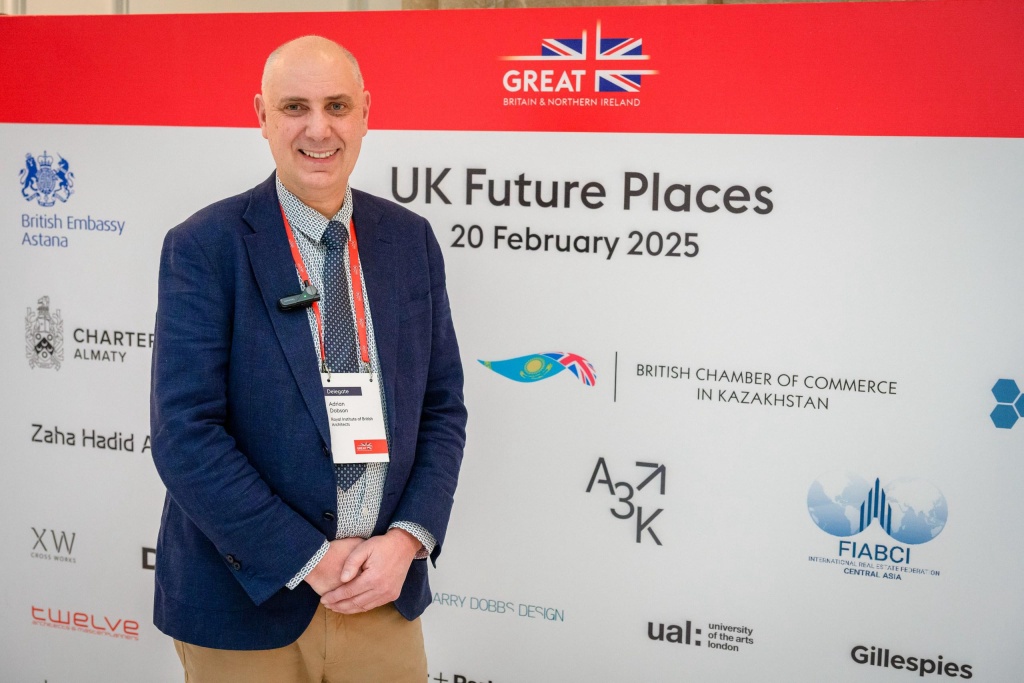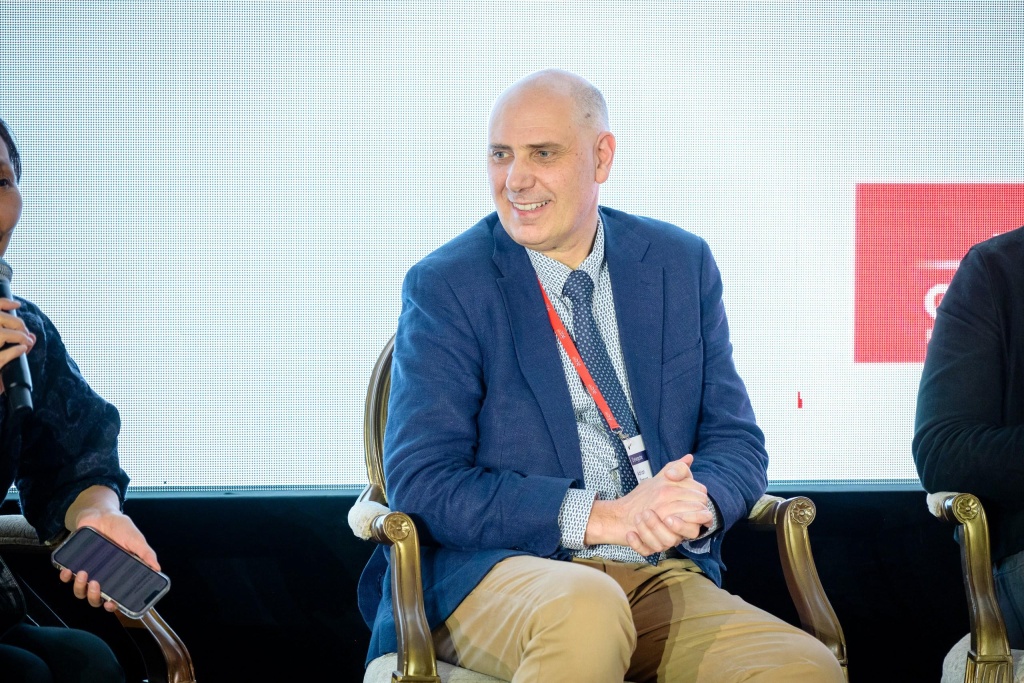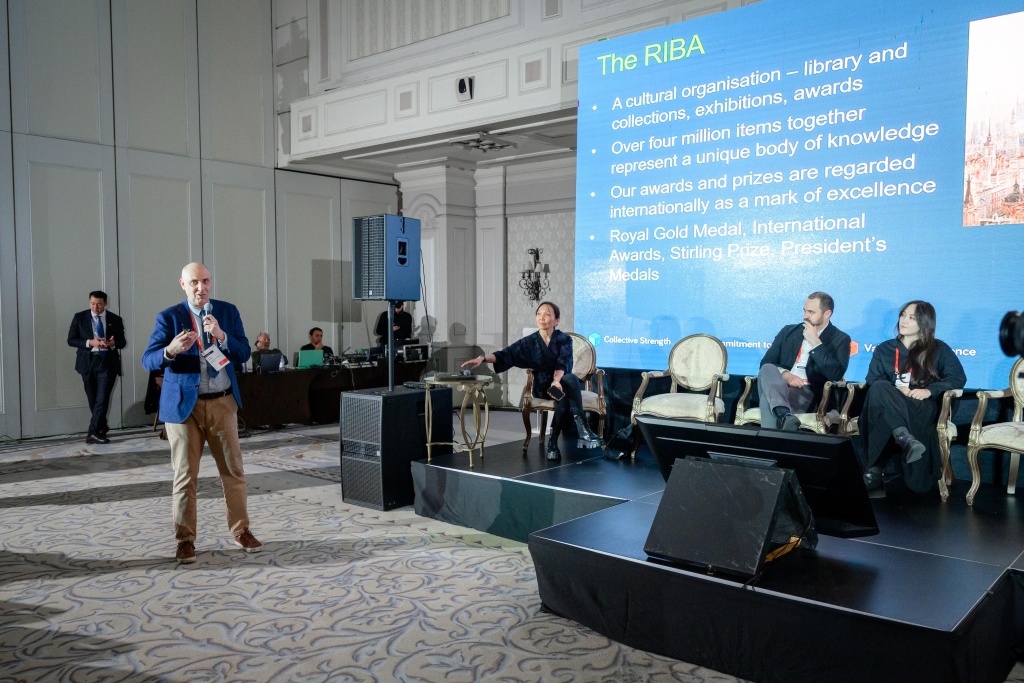Adrian Dobson, Executive Director at the Royal Institute of British Architects, shares his first impressions of Kazakhstan and talks about the importance of collaboration in architecture, sustainable urban development, and opportunities for UK architects in Central Asia.
Adrian Dobson, Executive Director for Knowledge and Standards at the Royal Institute of British Architects,
linkedin

About myself
I am the Executive Director for Knowledge and Standards at the Royal Institute of British Architects. This is the professional association for architects in the UK, but we also have members internationally.
My role involves overseeing education and practice standards and working with the government on matters related to architecture and construction.
About Kazakhstan
This is my first time in Kazakhstan. I had never been here before, and I didn’t have any strong expectations before my visit. That made the experience even more interesting. One of the things that struck me immediately, as I was arriving by plane, was just how vast the country is. You really get a sense of its scale when you travel over it.
On my first day, I had the chance to walk around Almaty. It was a beautiful, sunny day with snow on the ground, and although it was cold, it was a dry cold, which made it quite comfortable for walking. I really enjoyed seeing people out on the streets, spending time in the parks, and just experiencing the atmosphere of the city.
About activities
My visit has two main purposes. First, we are here to support the British Embassy, which has organized an infrastructure trade mission. Part of our role at the Royal Institute of British Architects is to look after the interests of UK-chartered architectural practices. On this trip, we have about 25 architectural firms visiting Almaty, looking to connect with local developers, contractors, and architects to explore potential collaboration opportunities.

The second part of my visit involves education. We also have an educational role, and I will be visiting KazGASA, the Academy of Engineering and Architecture, to explore how we might build a relationship with them. We want to see if there are ways in which we can work together to enhance architectural education and professional standards. I will be staying in Kazakhstan for four days, which should give me a little time to see more of the city.
In today’s world, architecture and construction are becoming increasingly international. However, successful projects rely on collaboration. You need to work with people who have local expertise and understand the specific conditions and regulations of a region. It’s about bringing different skills together to ensure that buildings and infrastructure are designed and constructed to the highest possible standards.
One of the things I always emphasize about construction projects is that they take a long time from start to finish. Because of this, the relationships between the people involved are extremely important. It’s not like buying something in a shop — construction is not a quick transaction. It’s a long-term process that requires trust, cooperation, and effective communication over an extended period.
About Kazakhstan and international opportunities
In fast-growing regions like Central Asia, urban development comes with unique challenges. Many cities are experiencing rapid growth, which can lead to issues such as heavy traffic congestion, poor air quality, and rising temperatures due to climate change. One of the key solutions is to focus on sustainable urban planning — investing in good public transport infrastructure and designing public spaces that work with the natural environment rather than against it.
International experience is valuable in city planning because many rapidly developing cities face similar challenges. By sharing expertise and learning from each other’s successes and mistakes, we can improve urban development worldwide. What is particularly new in this era is the sheer speed at which cities are growing. If you compare it to historical examples, such as the industrialization of Paris in the 19th century, the pace of modern urban expansion is far more intense. Managing this growth effectively requires skilled professionals — city planners, architects, engineers, and craftsmen — who can deliver high-quality projects at scale.
One important lesson from the UK is the value of preserving what makes a city unique. When planning and designing new developments, it’s crucial not to erase a city’s character. The goal is not to turn Almaty into an anonymous, generic city but to integrate new developments while respecting its existing urban fabric. Almaty already has a well-thought-out urban structure, and any future changes should build upon that rather than disrupt it.

What would I visit in Kazakhstan
If I had more time in Kazakhstan, I would love to explore more of the country. Kazakhstan is incredibly vast, with a wide range of landscapes and cultural sites. I would be particularly interested in visiting Astana, as it is a relatively new city and must have a very different architectural character compared to Almaty.
Additionally, I would love to see some of the smaller, historic cities that have a connection to the Silk Road. Exploring Kazakhstan’s architectural heritage, from its modern urban developments to its historical sites, would be a fascinating experience.